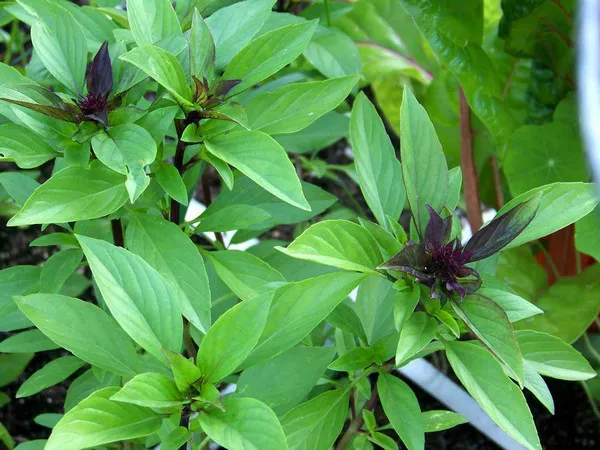In the vibrant tapestry of the plant kingdom, flowering plants often steal the spotlight with their colorful blooms and enticing fragrances. However, there exists a diverse array of non-flowering plants that boast equally fascinating reproductive strategies. From ferns to conifers, these plants employ unique mechanisms to perpetuate their species without the need for flowers. In this article, we delve into the intricate world of non-flowering plant reproduction, exploring the types of non-flowering plants, their reproductive methods, and comparing them with their flowering counterparts.
1. Types of Non-Flowering Plants
Non-flowering plants encompass a wide spectrum of taxa, each with distinct characteristics and reproductive mechanisms. Major groups include ferns, mosses, liverworts, hornworts, conifers, cycads, and ginkgo.
Spores: The Reproductive Currency
A fundamental aspect of reproduction in non-flowering plants revolves around spores. Spores serve as the primary reproductive units, akin to seeds in flowering plants. Structurally, spores are single-celled structures produced by sporophytes through the process of sporogenesis. These microscopic entities play a vital role in dispersal, ensuring the continuation of the plant’s genetic lineage.
Spores exhibit remarkable adaptability, employing various mechanisms for dispersal. Wind serves as a common agent for dispersing spores, carrying them over vast distances. Water also plays a crucial role, particularly in aquatic plants where spores may be buoyant, facilitating dispersal through currents.
Alternation of Generations
The life cycle of non-flowering plants is characterized by an alternation of generations between gametophyte and sporophyte phases. This phenomenon, known as alternation of generations, is pivotal in ensuring reproductive success.
The gametophyte generation represents the haploid phase of the life cycle, producing gametes through mitosis. These gametes, typically sperm and eggs, fuse during fertilization, giving rise to the diploid sporophyte generation. The sporophyte phase, in turn, produces spores through meiosis, initiating the cycle anew.
Each generation plays a distinct role in the reproductive process. Gametophytes are responsible for producing gametes, facilitating fertilization and the formation of sporophytes. Sporophytes, on the other hand, produce spores, ensuring the dispersal and colonization of new habitats.
2. Reproductive Methods
Ferns: Guardians of the Forest Floor
Ferns, renowned for their lush foliage and elegant fronds, employ spores as their primary mode of reproduction. Specialized structures called sori, located on the undersides of fronds, serve as repositories for spores. These sporangia-containing clusters release spores into the surrounding environment, where they germinate to form gametophytes. The resulting gametophytes produce gametes, facilitating fertilization and the development of new sporophytes, thus perpetuating the fern’s life cycle.
Mosses and Liverworts: Masters of Adaptation
Mosses and liverworts showcase remarkable adaptability in their reproductive strategies, utilizing both sexual and asexual mechanisms. Spores, produced within capsules known as sporangia, represent the sexual reproductive phase. Upon maturity, these capsules rupture, dispersing spores into the environment.
In addition to sexual reproduction, mosses and liverworts employ gemmae—asexual reproductive structures—to propagate. Gemmae are small, multicellular structures produced within gemma cups, specialized structures found on the surface of gametophytes. Upon detachment, gemmae give rise to new gametophytes, enabling rapid colonization of favorable habitats.
Conifers: Guardians of the Forest Canopy
Conifers, towering giants of the plant kingdom, boast a reproductive strategy centered around cones. These woody structures, comprising male and female cones, serve as the focal points of conifer reproduction.
Male cones, located on lower branches, produce pollen—a fine powder containing male gametes. Wind serves as the primary dispersal agent, carrying pollen grains to nearby female cones. Upon reaching the female cones, pollen grains settle on ovulate scales, where fertilization occurs.
Fertilized ovules develop into seeds, each encapsulated within a protective structure known as a cone scale. As seeds mature, cones undergo senescence, eventually dispersing seeds into the surrounding environment. This cycle ensures the dissemination of conifer progeny, perpetuating their lineage across diverse landscapes.
3. Comparison with Flowering Plants
While non-flowering plants and flowering plants differ in their reproductive strategies, both exhibit remarkable adaptability and evolutionary prowess. Flowering plants, characterized by their elaborate flowers and efficient pollination mechanisms, have achieved widespread dominance across terrestrial ecosystems. Their reliance on pollinators for fertilization offers advantages in terms of genetic diversity and reproductive efficiency.
In contrast, non-flowering plants have evolved diverse strategies tailored to their ecological niches. From ferns dispersing spores on forest floors to conifers releasing seeds into the wind, these plants have thrived by capitalizing on their unique reproductive adaptations. While lacking the flamboyance of flowers, non-flowering plants excel in resilience and adaptability, showcasing the beauty of evolutionary diversity.
Conclusion
In conclusion, non-flowering plants represent a rich tapestry of botanical diversity, with reproductive strategies as varied as the ecosystems they inhabit. From the fern’s delicate fronds to the towering majesty of conifers, these plants underscore the resilience and adaptability of life on Earth. By unraveling the intricacies of their reproductive mechanisms, we gain insight into the wondrous complexities of the natural world.


